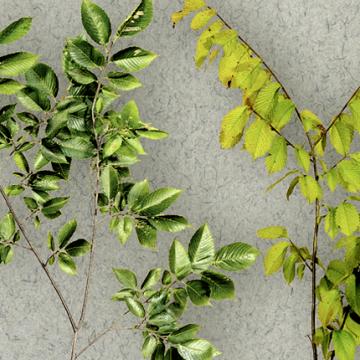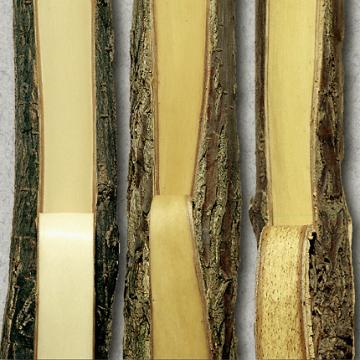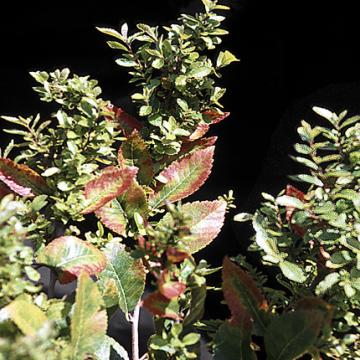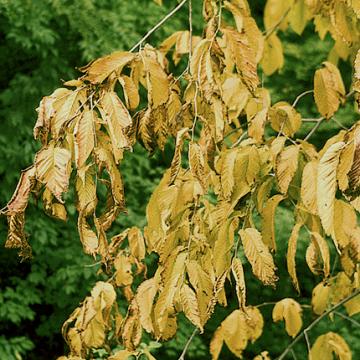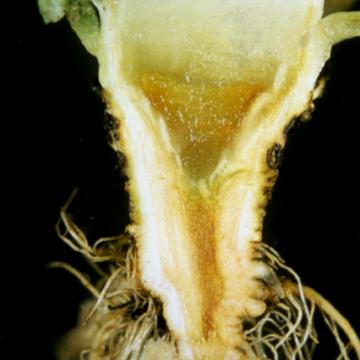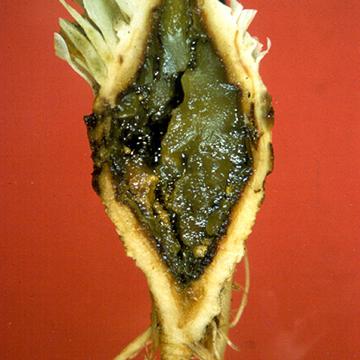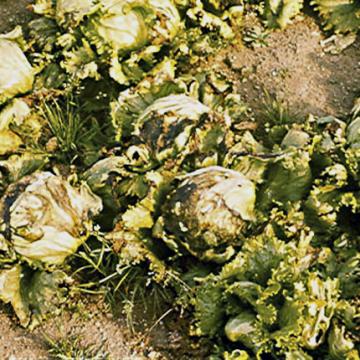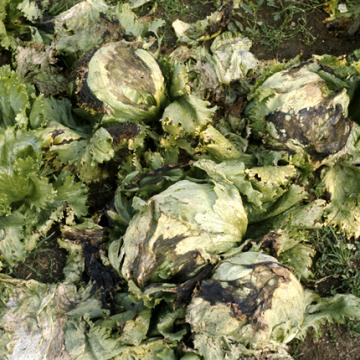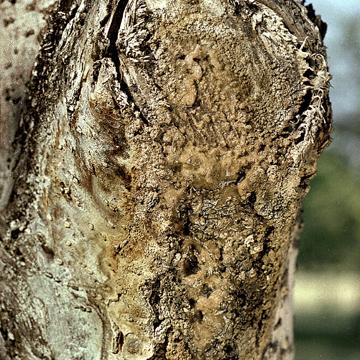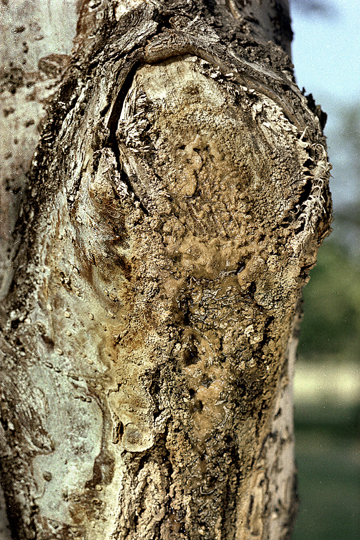DISEASE: Elm yellows
HOST: Elm
Diseased twig (right) with epinasty, chlorosis, and yellowing of leaves. Sometimes both yellow and green leaves occur on same branch. Healthy branch (left).
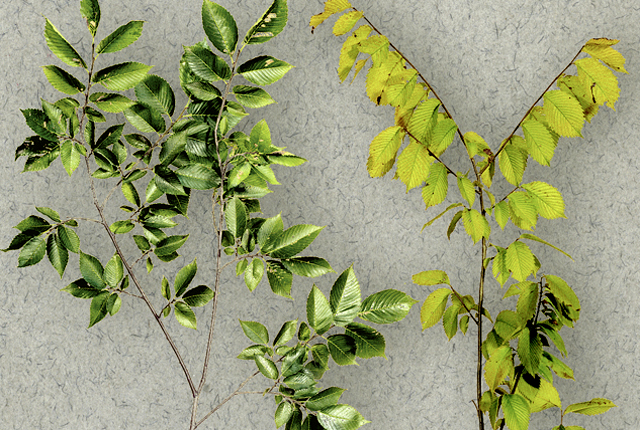
Elm yellows | Elm
DISEASE: Elm yellows
HOST: Elm (Ulmus americana)
PATHOGEN: 'Candidatus Phytoplasma ulmi'
PATHOGEN SYNONYM: Phytoplasma Elm yellows group
SOURCE: W. Sinclair
DISEASE: Elm yellows
HOST: Elm
Branches with butterscotch discoloration (center) and necrotic flecks in phloem and vascular cambium (right). Healthy branch (left). Sudden wilt and browning is common with small trees.
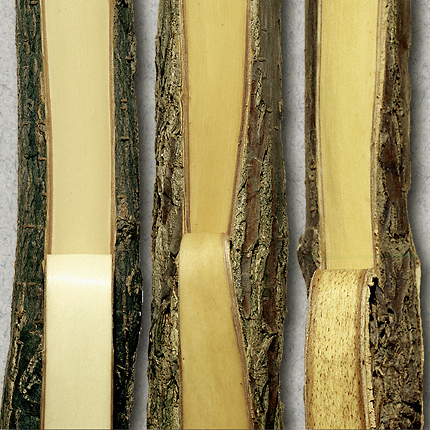
Elm yellows | Elm
DISEASE: Elm yellows
HOST: Elm (Ulmus americana)
PATHOGEN: 'Candidatus Phytoplasma ulmi'
PATHOGEN SYNONYM: Phytoplasma Elm yellows group
SOURCE: W. Sinclair
DISEASE: Elm yellows
HOST: Elm
Elm yellows is characterized by witches'-brooms and stunting. Some cultivars have both yellow and reddish foliar discoloration.
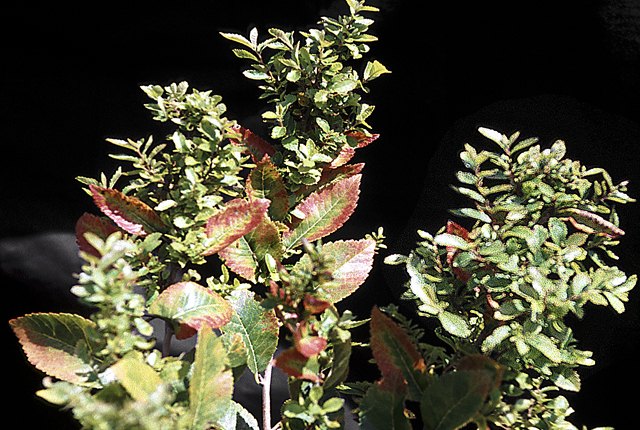
Elm yellows | Elm
DISEASE: Elm yellows
HOST: Elm (Ulmus parvifolia)
PATHOGEN: 'Candidatus Phytoplasma ulmi'
PATHOGEN SYNONYM: Phytoplasma Elm yellows group
SOURCE: W. Sinclair
DISEASE: Elm yellows
HOST: Elm
Late stage of elm yellows disease.
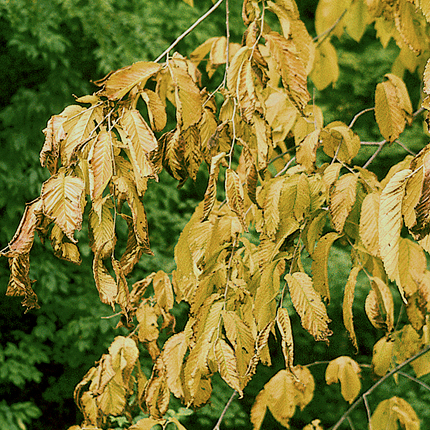
Elm yellows | Elm
DISEASE: Elm yellows
HOST: Elm (Ulmus rubra)
PATHOGEN: 'Candidatus Phytoplasma ulmi'
PATHOGEN SYNONYM: Phytoplasma Elm yellows group
SOURCE: W. Sinclair
DISEASE: Head rot (Jelly rot)
HOST: Lettuce
Sliced head of lettuce. Typical symptoms are a translucent appearance and browning or jelly rot of the stalk (crown).
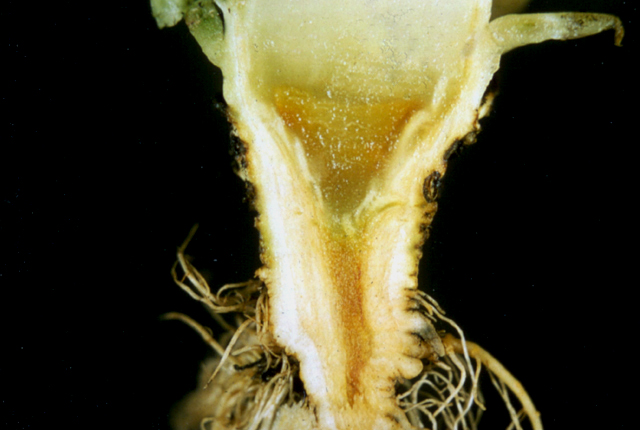
Head rot (Jelly rot) | Lettuce
DISEASE: Head rot (Jelly rot)
HOST: Lettuce (Lactuca sativa)
PATHOGEN: Pectobacterium carotovorum
PATHOGEN SYNONYM: Erwinia carotovora subsp. carotovora
SOURCE: J. Cho, A. Alvarez
DISEASE: Head rot (Jelly rot)
HOST: Lettuce
Advanced stage of lettuce stalk rot (crown).
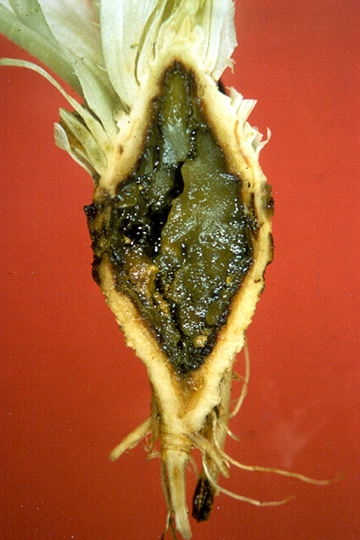
Head rot (Jelly rot) | Lettuce
DISEASE: Head rot (Jelly rot)
HOST: Lettuce (Lactuca sativa)
PATHOGEN: Pectobacterium carotovorum
PATHOGEN SYNONYM: Erwinia carotovora subsp. carotovora
SOURCE: J. Cho, A. Alvarez
DISEASE: Head rot (Jelly rot)
HOST: Lettuce
Head rot of lettuce first appears as rapid wilt of outer wrapper leaves. Wilt is caused by collapse of vascular tissues, which develop a pinkish to brown discoloration.
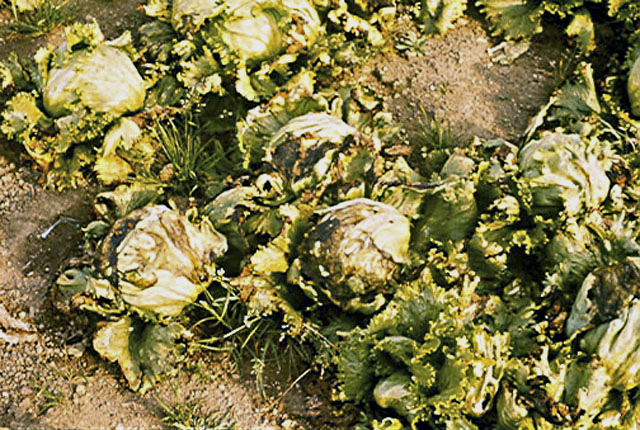
Head rot (Jelly rot) | Lettuce
DISEASE: Head rot (Jelly rot)
HOST: Lettuce (Lactuca sativa)
PATHOGEN: Pectobacterium carotovorum
PATHOGEN SYNONYM: Erwinia carotovora subsp. carotovora
SOURCE: L. Fucikovsky
DISEASE: Marginal leaf blight
HOST: Lettuce
Marginal leaf blight first appears as slimy wilting of leaf margins. Small, reddish lesions may be seen on leaf blades. Infected tissues turn brown to black in time.
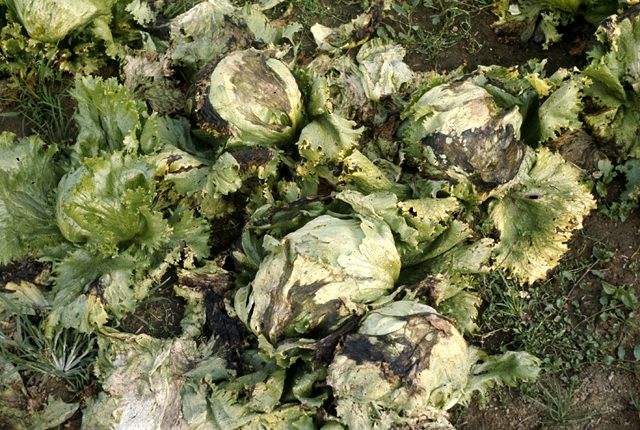
Marginal leaf blight | Lettuce
DISEASE: Marginal leaf blight
HOST: Lettuce (Lactuca sativa)
PATHOGEN: Pseudomonas marginalis
SOURCE: L. Fucikovsky


